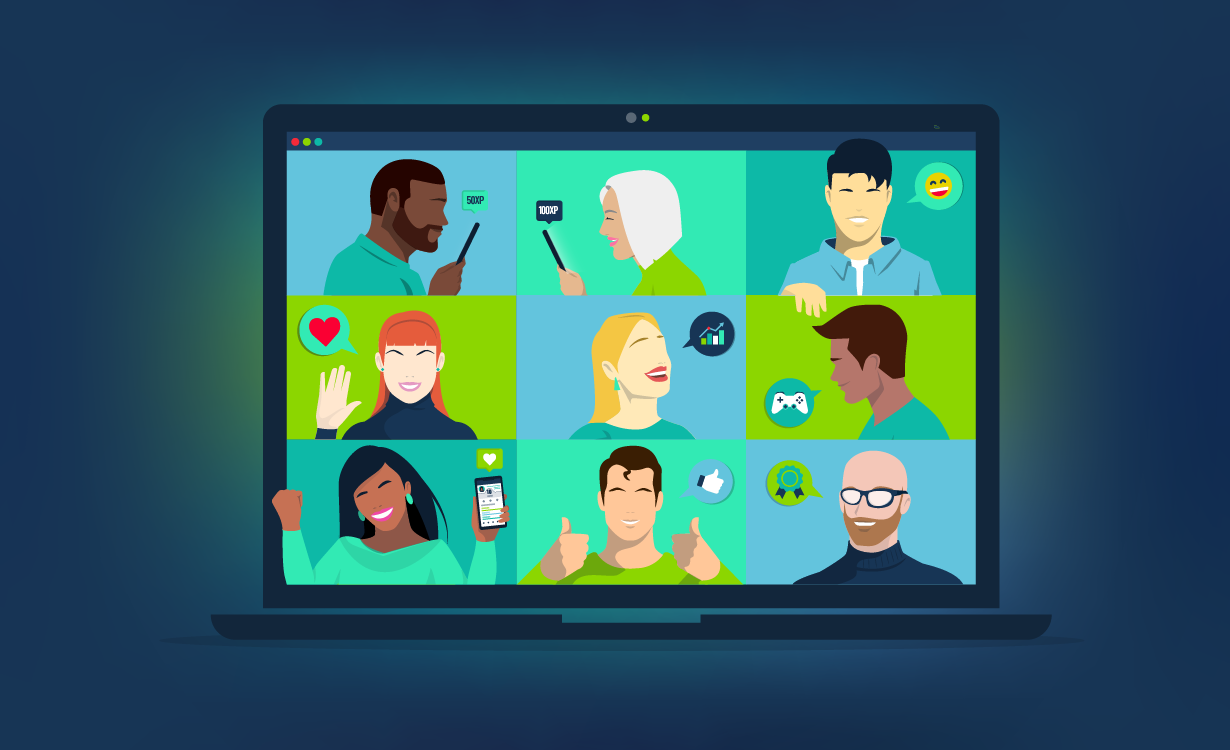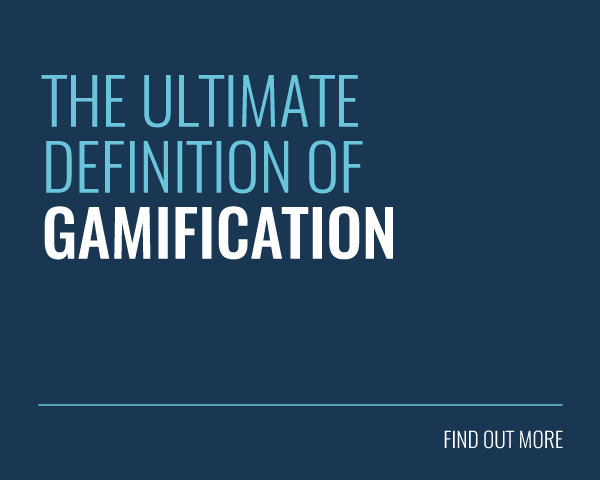
How does game-based learning work?
Well, learning shouldn’t be a yawn-worthy experience, and with game-based learning, it doesn’t have to be.
Game-based learning turns the learning journey into an exciting and engaging voyage that keeps you coming back for more!
Serious games blur the line between education and entertainment until you don’t even realise you’ve just learnt algebra, or UX design, or how to count to one hundred in Klingon.
BBC Bitesize, the Nintendo Brain Training series and the hoard of spelling-bee games are wildly popular examples of game-based learning done right. In 2018, the industry was said to be worth $2.4 billion USD.
What makes a successful game-based learning app? It’s getting the balance right between academic theory, practical skills and traditional gaming aspects. But it’s also a lot more than that…
Join us as we discover the nuts and bolts of how game-based learning works and the best ways to infiltrate it in your training programme.
First of All, What Is Game-Based Learning?
A lot of people mix up game-based learning with gamification, but they’re completely different. Like crocodiles and alligators, frogs and toads, or Natalie Portman and Keira Knightly; they’re similar, but have characteristics distinct from each other.
Game-based learning is a form of edutainment (educational entertainment). It’s designed to balance subject matter with gameplay. Its purpose is to make learning as engaging as possible.
Naturally, it’s only effective if the learner can retain the info and apply it to real-world scenarios.
What Are the Benefits of Game-Based Learning?
There are many benefits of game-based learning, and you’ll notice them from the first whistle:
1. It’s Engaging
Game-based learning is more engaging than traditional forms of training. It’s a form of active learning. It’s so engaging in fact, that the Game-Based Learning industry is predicted to be worth 7.3 billion by 2021!
2. It Simulates Real-Life Situations
The learner has a hands-on experience of learning, which inevitably helps them in real-life situations. This type of simulation training can be found in things such as the driving theory test (Hazard Perception). This relaxes the learner so they can practise critical thinking in a calm environment. (More on this later).
3. It Provides Instant Feedback
With gamified features such as points, levels and leaderboards, learners will be able to see how well they’re doing almost instantly. This is particularly the case for scenario and multiple-choice questions, as admins can add in explanation boxes for why a particular answer is right or wrong.
Types of Game-Based Learning
1. Interval Games
Interval gaming is where gameplay is interspersed with learning content. This could be in the form of multiple-choice questions, scenario-based questions, learning videos or basically any learning format you want. On this note, employers 75% more likely to watch a video than to read documents, emails or web articles.
2. Gated Games
88% of employees agree that it’s important for employers to reward hard work. Gated games are where we do this! The fun and funky gaming side won’t be unlocked until the learner has completed a cluster of learning questions/content. It’s like eating your vegetables to get a desert.
3. Simulation Games
Simulation games go back to around 40 years ago. One of the first great examples was Microsoft Flight Simulator. This was a game designed to simulate an aeroplane flight using 3-D graphics. The purpose was to aid pilots in the understanding of the mechanics behind aircraft usage.
This included the navigation of latitudes, how to control an aircraft in differing seasons and circle navigation. Simulation games have come along way since the first Flight Simulator games.
Such is the realism these days, that we’ve started to use game simulations to change anxiety patterns. Simulation games can only be a good thing for learning, and we for one are intrigued to see where it’s going next…
How Can You Implement Game-Based Learning at Work?
Let’s look into the formats in which to train via game-based learning:
1. Custom-Built Games
Custom-built games are learning games that are built from scratch. The pros are that you can tailor your games to fulfil your training needs. This can be anything from the UI design to the amount of learning content inserted. The cons are that they are time-consuming and require a games designer to build, which can be really costly.
2. Rapid Game Authoring
Rapid game content is the option to go for if you want to focus on the actual training, rather than faffing around with designing the game templates. With our game-based authoring tool, Growth Engineering Authoring Tool, you’ll get pre-designed game templates such as Bubble Blaster, Whack-a-Mole, and a variety of platform games. You can upload learning assets across the board such as; questions, videos, images, audio files and much more!
3. Commercial Video Games
By using commercial video games, teachers/L&D admins adopt already established games to push their learning agendas. This option isn’t that well-known yet, and it only used by a slim amount. This is because it involves quite a lot of planning, and admins will have to have a competent level of game designing in order to make it work.
Examples of this might include sandbox games such as Minecraft. Sandbox games have minimal limitations on their characters and on the tasks of the game. This gives admins the power of crafting their own training objectives in a pre-constructed world that a lot of learners will be already familiar with.
Final Words
Game-based learning is so versatile, that you can implement it in a manner of ways to suit your organisation. For example, if you’ve got a games designer (or you can source one) you can create a custom-built game specially designed for your company.
You could utilise commercial video games such as Minecraft and use the vast landscape to train your learners. Or, you could save time and money by using a Rapid Game Authoring tool, such as Growth Engineering Authoring Tool. As such, it’s no surprise game-based learning is only going to grow in the future!
Game-based learning works so well because it incorporates engagement boosting tools such as gamification.
Want to know more? Check out our awesome guide: ‘The Future of Gamification.’








